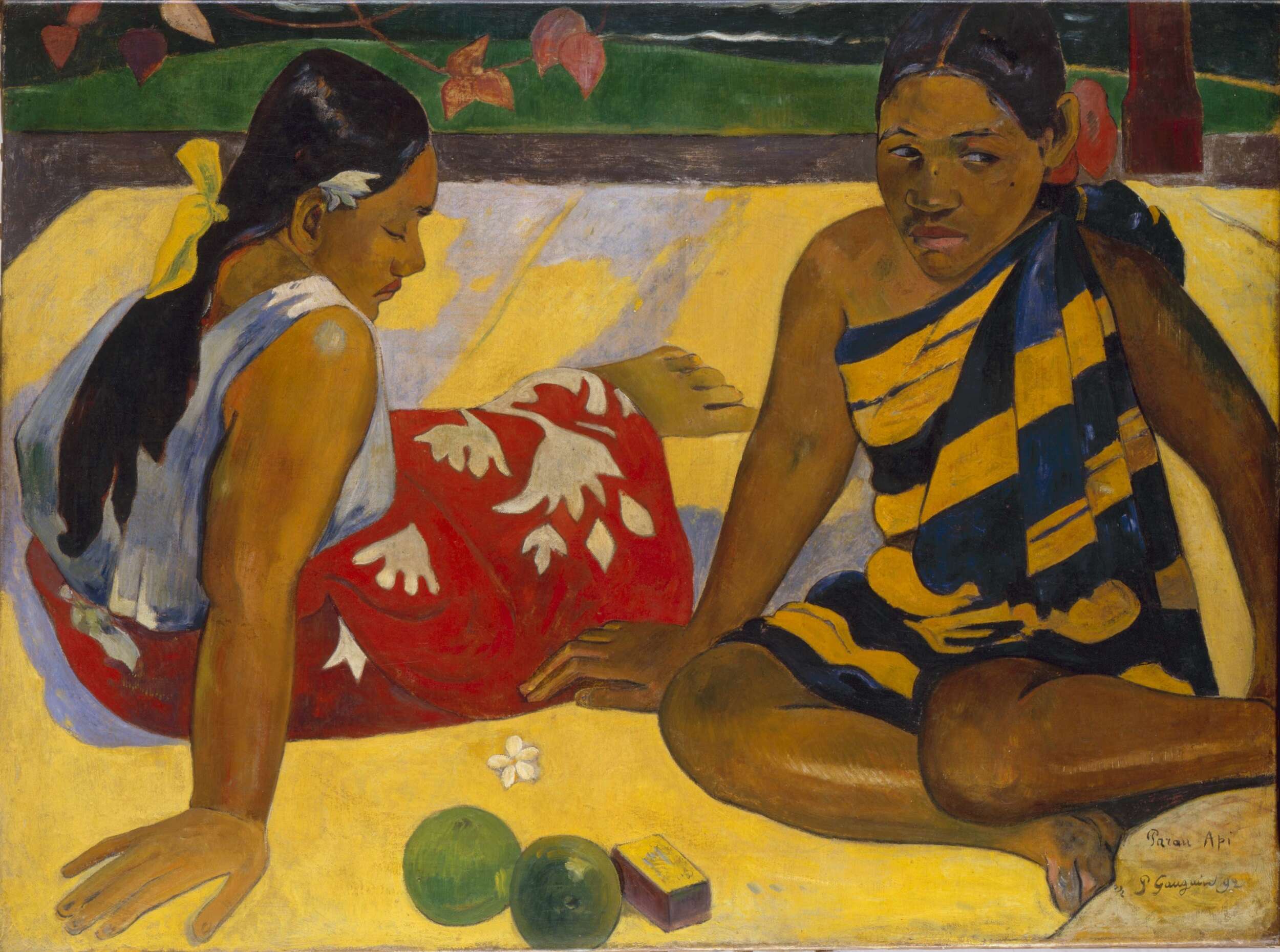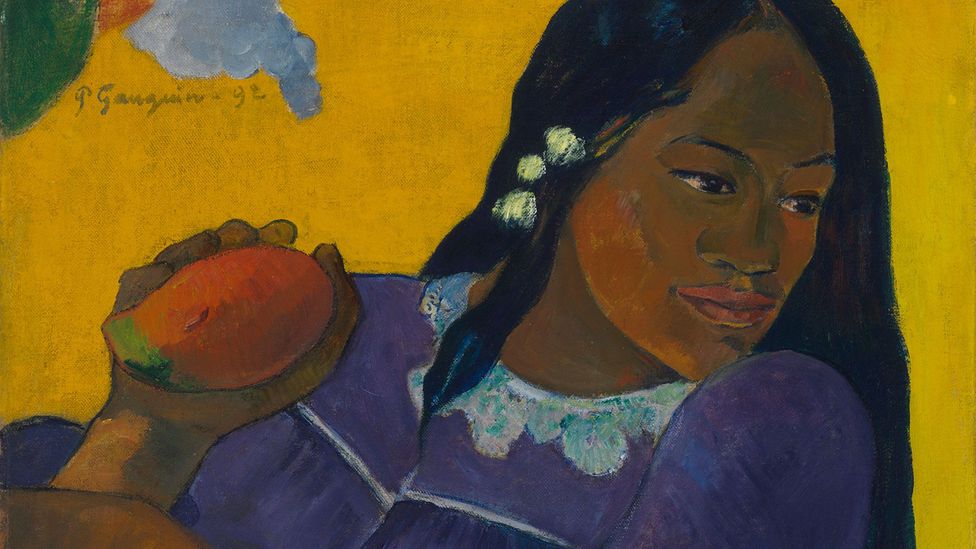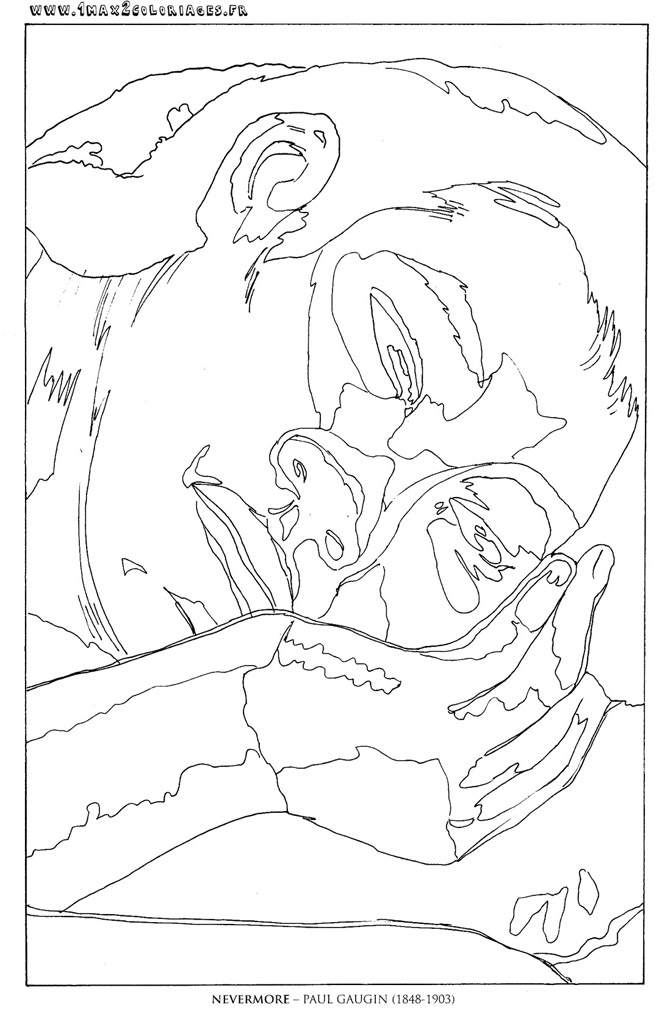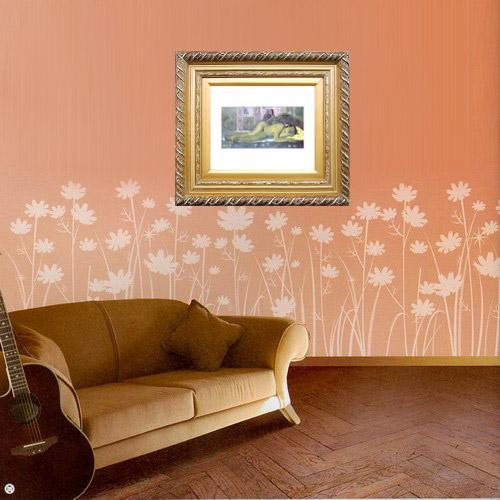
Paul Gauguin, We pray to you, Mary, 1891 Famous impressionist
She is sometimes identified as Paul Gauguin's 15-year-old companion Pahura. The painting's title associates the on the ledge with Edgar Allan Poe's poem 'The Raven'. In it, a poet, driven mad by the death of his lover, hears a raven endlessly repeating 'nevermore'. This sense of loss may allude to Gauguin's disillusionment at the.

Nevermore Paul Gauguin Obraz zs17152 Paul Gauguin Reprodukcie DECOTREND
Nevermore: Paul Gauguin. Nevermore is an 1897 painting in the Post-Impressionist style by the leading French artist Paul Gauguin. This work is located in the Courtauld Institute of Art in London, United Kingdom.

Paul Gauguin’s Tahiti A Creative Obsession
London, Courtauld Institute Gallery On 28 June 1895 Paul Gauguin boarded a train at the Gare de Lyon in Paris. A few days later he was on board ship, beginning his second voyage to Tahiti. He would not see France again.

Nevermore in Courtaluld Gallery Paul Gauguin, Nevermore, o… Flickr
Paul Gauguin, Nevermore by Rachel Ropeik, Dr. Beth Harris and Dr. Steven Zucker Paul Gauguin, Nevermore, 1897, oil on canvas (Courtauld Gallery, London) More Smarthistory images…

Paul Gauguin Faaturuma (also known as Melancholy) Oil Painting Oil
Active primarily during the nineteenth century, Paul Gauguin (1848 - 1903). Gauguin created Nevermore at a time of stress due to the death of his daughter and financial difficulties. The painting is inspired by Edgar Allan Poe's famous 1845 poem The Raven, which tells the story of a talking raven's visit to a distraught lover who is.

'Paul Gauguin Nevermore Art Print Poster' Posters
Paul Gauguin's Nevermore has been voted Britain's most romantic work of art. The painting of a Tahitian girl reclining on a bed, against a background of a raven on a ledge and two figures in.

'Paul Gauguin Nevermore Art Print Poster' Posters
Despite Gauguin's desire to flee Paris, Nevermore very much stems from European painting traditions, of which Gauguin would have been fully aware.The reclining figure evokes both Renaissance female nudes by the Venetian artist Titian and more recent works, such as Ingres's Grande Odalisque of 1814 (Louvre, Paris).. Ingres's masterpiece also depicts exotic luxury but does so with a serene.

Nevermore, 1897 Wood Print by Paul Gauguin
Paul Gauguin's "Nevermore", painted in 1897, is an oil on canvas artwork displayed in the Courtauld Institute of Art in London, UK. The painting features a reclining, naked Tahitian woman intended for the viewing pleasure of white European males. Gauguin aimed to showcase a barbaric splendor of times past through this simple nude, even.

Nevermore, 1897 Wood Print by Paul Gauguin
The Courtauld Institute of Art London, United Kingdom Paul Gauguin painted Nevermore while living in Tahiti, an island in the southern Pacific colonised by France. Intended for a white.

'Paul Gauguin Nevermore Art Print Poster' Posters
Nevermore is an 1897 oil on canvas painting by the French Post-Impressionist artist Paul Gauguin. Since 1932 it has been in the collection of the Courtauld Institute of Art and on display in the Gallery. It was executed during the artist's second stay on the island of Tahiti in the South Pacific.

Painting by Paul Gauguin, Nevermore Editorial Stock Image Image of
Paul Gauguin Nevermore Nevermore Date of Creation: 1897 Height (cm): 60.50 Length (cm): 116.00 Medium: Oil Support: Canvas Subject: Fantasy Framed: No Art Movement: Post-Impressionism Created by: Paul Gauguin Current Location: London, United Kingdom Displayed at: Courtauld Institute of Art Nevermore Page's Content Story / Theme

Gauguin’s ‘strange, beautiful and exploitative’ portraits BBC Culture
1848 - 1903 Gauguin was born in Paris, the son of a journalist. He began his career in the merchant navy and then in 1871 became a stockbroker; he also took up painting. His early works are influenced by Pissarro, with whom he worked in 1879 and 1881.

Coloriages Tableaux de Maître Paul Gaugin Nevermore
Nevermore is an 1897 oil on canvas painting by the French Post-Impressionist artist Paul Gauguin. [1] Since 1932 it has been in the collection of the Courtauld Institute of Art and on display in the Gallery. [2] It was executed during the artist's second stay on the island of Tahiti in the South Pacific. [1]

1940s After Paul Gauguin "Nevermore", First Edition Swiss FullColor
Nevermore, 1897 by Paul Gauguin. Like The Spirit of the Dead Watches of five years earlier, this picture can be seen as a "simple study of an Oceanic nude." Here too there is a reminiscence of the composition of Edouard Manet's Olympia, which Gauguin admired, and the clear, continuous outline around the figure suggests the earlier artist's anti-Impressionist use of conventional contour.

1940s After Paul Gauguin "Nevermore", First Edition Swiss FullColor
Paul Gauguin, Nevermore, 1897, oil on canvas (Courtauld Gallery, London) Smarthistory images for teaching and learning: [flickr_tags user_id="82032880@N00″ tags="nevermore,"]

Paul Gauguin Nevermore
There's the 'Paul Gauguin' luxury cruise liner, Paul Gauguin Museum, and even a main street in the capital city named after the man. Replicas of his famous paintings adorn postcards, hang in important government offices and on hotel walls.. Nevermore 1897. Paul Gauguin (1848-1903) Avant et après 1903. Paul Gauguin (1848-1903) Te Rerioa.